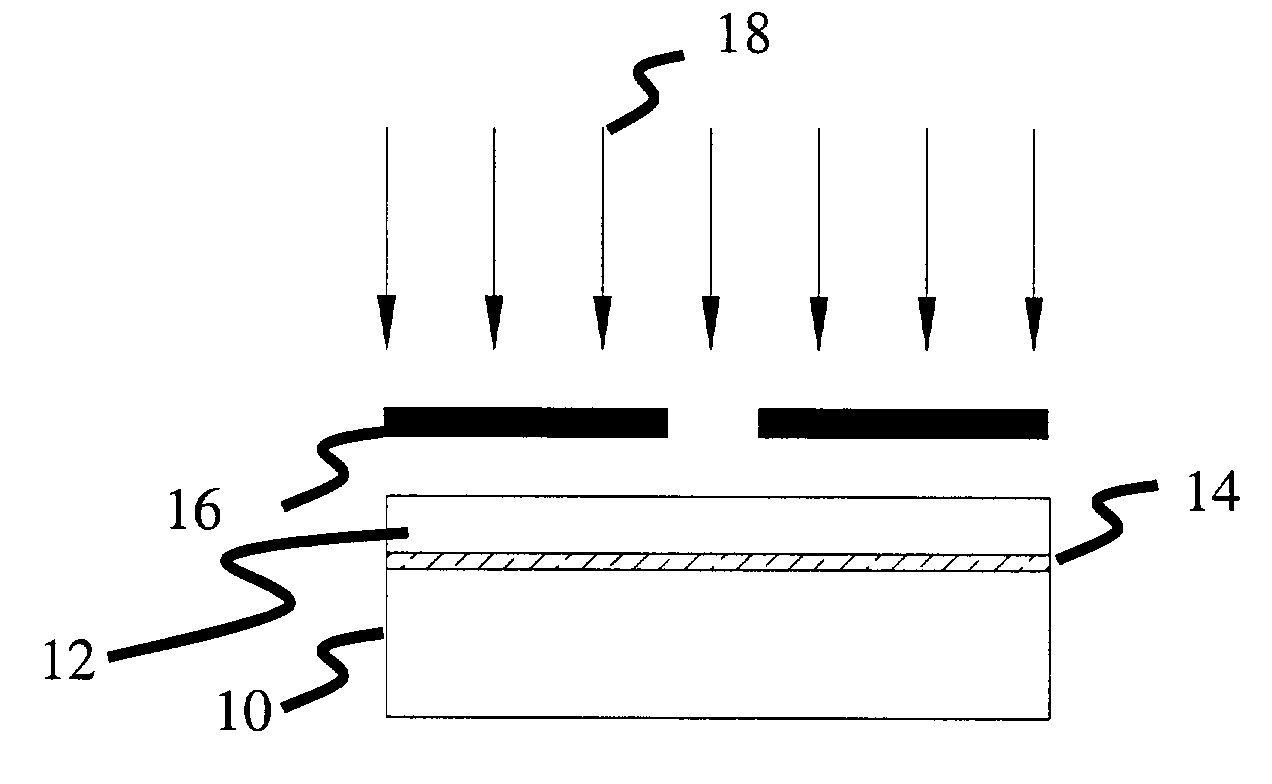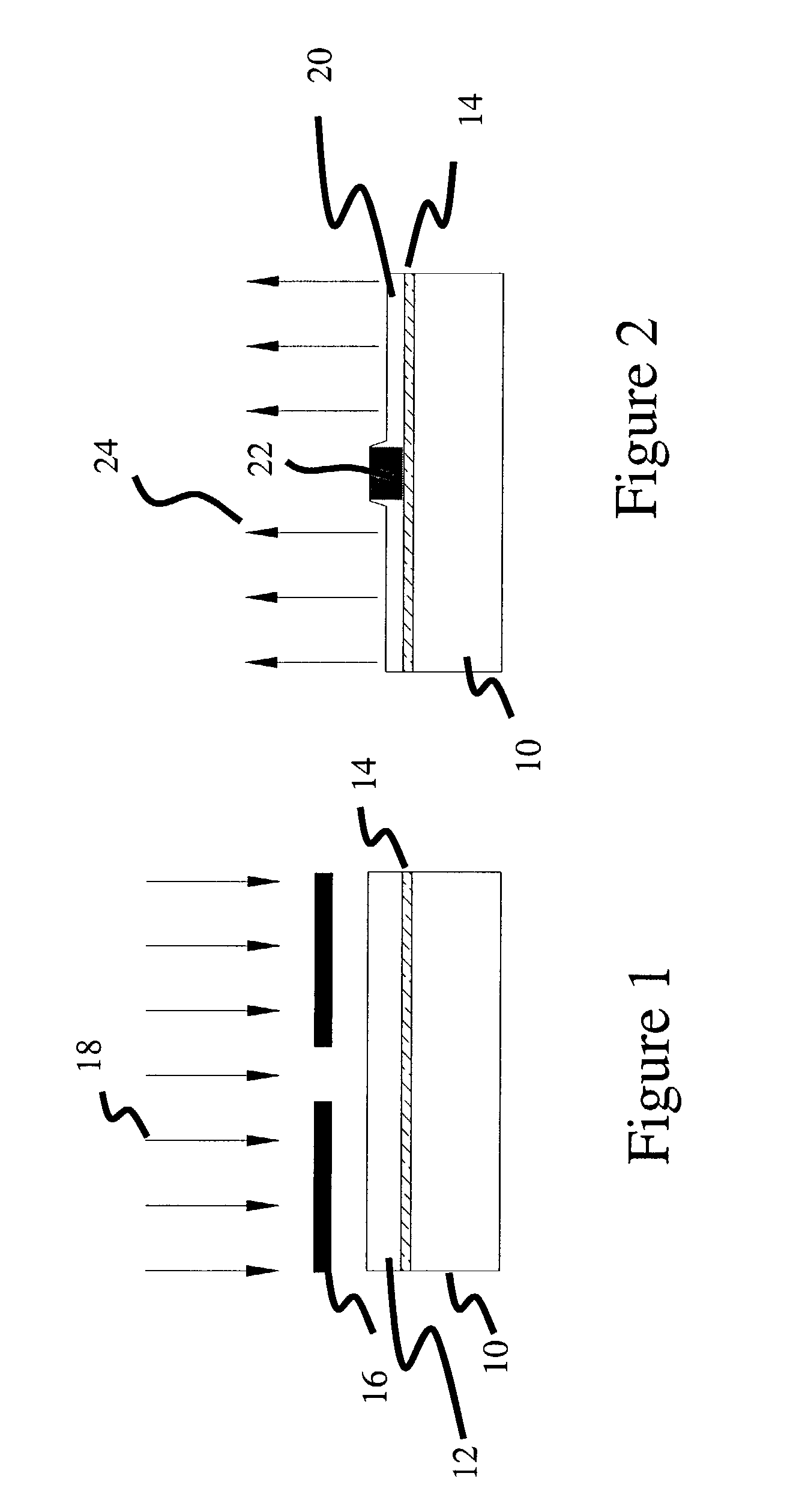Method for making optical device structures
a technology of optical devices and structures, applied in the field of forming optical device structures, can solve the problems of waveguide structures, light transmission losses, difficult to fabricate mirrors with conventional methods,
- Summary
- Abstract
- Description
- Claims
- Application Information
AI Technical Summary
Benefits of technology
Problems solved by technology
Method used
Image
Examples
example 1
[0052] Example 1 describes the preparation of a surface topography comprising a polymeric composite material derived from Udel polysulfone and CY 179 using UV-irradiation.
[0053] Into a suitable clean glass container, 60 grams of low color grade polysulfone polymer (Udel P-3703, available from Solvay Advanced Polymers, Alpharetta, Ga.) was added along with 210 grams of anhydrous anisole. The blend was warmed to about 50.degree. C. and mixed for about 24 hours to dissolve the polymer. To this mixture was added 20 grams of CY179 epoxy monomer, 0.5 gram of Cyracure UVI-6976, and 0.3 gram of Irganox 1010. The mixture was blended to completely intermix all components and filtered prior to use through a nominal 0.5 micron membrane filter to give the polymerizable composite. A 5 micron thick film of the polymerizable composite was prepared on a glass substrate by spin coating the material at 3000 revolutions per minute (rpm) for 30 seconds and heating on a hotplate for 5 minutes at 80.degre...
example 2
[0054] This Example describes the preparation of a surface topography comprising a polymeric composite material derived from an acrylate copolymer containing about 75% by weight of poly(methyl methacrylate) and 25% poly(tetrafluoropropyl methacrylate) and CY 179 using UV-irradiation.
[0055] Into a glass container, capable of being sealed under vacuum, was distilled 19 grams of tetrafluoropropyl methacrylate, followed by addition of 56 grams of methyl methacrylate, 93 grams of cyclohexanone, 0.15 gram of N-dodecanethiol, and 0.19 gram of benzoyl peroxide. The mixture was degassed and sealed under vacuum. After being heated with mixing at about 75.degree. C. for about 24 hours, followed by further heating at about 80.degree. C. for about 24 hours, the resulting mixture was cooled and treated with 55.5 grams of anisole. The resulting blend was a viscous, clear, and colorless acrylate copolymer consisting of about 75% poly(methyl methacrylate) and 25% poly(tetrafluoropropyl methacrylate)...
PUM
 Login to View More
Login to View More Abstract
Description
Claims
Application Information
 Login to View More
Login to View More - R&D
- Intellectual Property
- Life Sciences
- Materials
- Tech Scout
- Unparalleled Data Quality
- Higher Quality Content
- 60% Fewer Hallucinations
Browse by: Latest US Patents, China's latest patents, Technical Efficacy Thesaurus, Application Domain, Technology Topic, Popular Technical Reports.
© 2025 PatSnap. All rights reserved.Legal|Privacy policy|Modern Slavery Act Transparency Statement|Sitemap|About US| Contact US: help@patsnap.com



